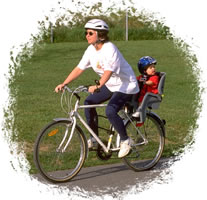It's been a bad fortnight for throwing things away.
I decided to scrap my old washing machine at Norwich, after something broke free and it danced around the kitchen so wildly that, before I could get to it, it had shattered the catch on the door and broken itself open. Fortunately I got there shortly before it had a chance to throw out what remained of its water all over the floor. It was an old machine inherited when I bought the house and I had no instructions for it. I reckoned it wasn't even worth inviting a man to come and see to it, since I knew he would charge £40 for saying "Ooh no, that's fifteen years old. They don't do parts for that any more."
So I went to the Norwich Co-op department store and selected a new one, attending of course to the issues of economy of energy and water consumption (though nothing seemed as good on that front as the excellent one we have in Cambridge, bought some years ago in Oxford). The story of trying to get the delivery men to remove the old one from under the stairs, and put the new one in, is not right relevant to this post, and would take some time to narrate. One day perhaps.
While I had the men taking the old washing machine away, I managed to persuade them to take the ex-hoover, at an additional cost of £5. The hoover was a wedding present in 1979, an amazing piece of equipment with a sunshine yellow plastic case (into which you inserted paper disposable dust bags). It had been lovingly maintained for 25 years with a number of visits to
Electric Aids on St Clements in Oxford. However, when it blew up with a loud bang and a rather unpleasant burning smell last November I reckoned it had probably deceased completely. I called in at the repair shop on the Dereham Road to ask about the possibility of repair, but when I said it was over 25 years old they were not enthusiastic, and eventually I succumbed to buying a reconditioned Dyson from them instead. It has to be said that the Dyson is more effective, though it had the unpleasant habit of giving out a disgusting smell of unwashed dog until I took it apart and washed out its parts. I assume its previous owners lived in some smelly squalor.
Anyway, the beloved old hoover has now gone. I also contemplated getting them to take away the chest freezer that I am trying to dispose of. But since that still works I shall try Freecycle or a housing charity instead if I can find some time when I can be in for people to collect it.
Then there was my dearly beloved powerbook computer which has had its hard disk die rather young. This partly explains the long silence from posting on my Blogs, since much time and effort has been put into the task of recovering from a computer crisis with the help of good friends with the right kind of equipment and know-how. The computer will not go to the bin but will (I hope) be revived by a transplant of a hard disk rather recently installed in an older and less powerful iBook belonging to Elizabeth, so we should end up with the 12 inch powerbook running again and serving as a useful family laptop for a variety of purposes including emergencies.
So perhaps this is a story not just about throwing away and getting new, but also about reconditioning and mending. The latest achievement on that front is the mending of the kitchen stool (a simple device with a set of steps that folds out of it — you know the sort). We've had it for perhaps 20 years. It hasn't had any cover on its seat for most of those years (as far as I can recall it once had a PVC cover with some plastic foam underneath. I can't even remember what colour it was. The cover split and had to be removed rather early in its career. Currently it just has a good hard piece of thick ply-wood, which is becoming increasingly smooth and polished with age and wear). However the real problem was its tootsies, the little black plastic caps on the bottom of its steel legs. One of those split perhaps about ten years ago. For many years it was kept attached to the leg with blue tack (you put blue tack in the tootsie and then stand the foot of the stool in it and it clings hard enough not to fall off when you lift it). But of late the blue tack had become hard and dirty and no longer served its purpose, so the tootsie fell off every time you lifted the stool to move it elsewhere. I suppose we could have replaced the blue tack. But in a fit of enthusiasm I went to the Hardware store (Mackays on East Road) to look for some new tootsies a month or two ago.
Well, all I could find there was the rubber ends for walking sticks. These have a proper name but I can't remember what it is now. So I bought four of these (because one would not be enough since they were rather different in thickness from the existing plastic tootsies). The man advised that I should have metal washers to put inside to prevent the metal legs of the stool from cutting through the rubber. I was a bit shocked to find the washers cost 58p each, and I realised only afterwards that I would have done better to put a coin in each: that would have cost only a penny each. Anyway, to cut a long story short, I took these rubber tips and steel washers home and they sat around for about three weeks until the Professor devised some way to cut off the remaining tight-fitting tootsies and fit the new ones. Now we have a splendid stool with four nice soft rubber feet. I guess it will probably last another 25 years. Perhaps more.

 but because it means the council will not have to mow with a machine (and the nettles and brambles will be better controlled than with one mowing per year which is what we have been getting).
but because it means the council will not have to mow with a machine (and the nettles and brambles will be better controlled than with one mowing per year which is what we have been getting). and galloped back and forth trying to discover what was what (somewhat to the amusement and concern of the students in Barnwell Hostel, into whose windows the cows—well, rather steers—were peering). But now they seem to have settled down happily in a shady patch of cow parsley....
and galloped back and forth trying to discover what was what (somewhat to the amusement and concern of the students in Barnwell Hostel, into whose windows the cows—well, rather steers—were peering). But now they seem to have settled down happily in a shady patch of cow parsley....








